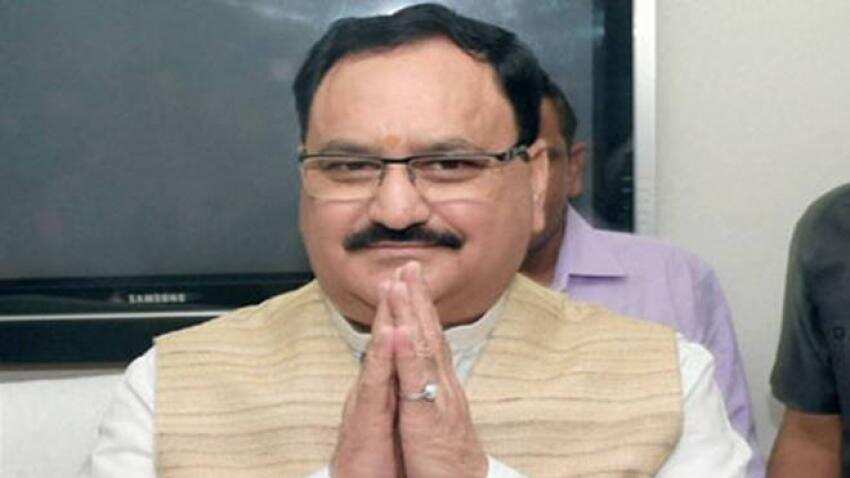Digital health can facilitate proactive treatment for disabled patients: Nadda

Key highlights:
- Digital health has great potential towards reducing inequity in provisioning healthcare services
- Well-designed digital health services can reduce medical errors and cost of care, says Nadda
- National Health Policy articulates the healthcare aspirations of people with three distinct goals
Digital health has great potential towards reducing inequity in provisioning and distribution of healthcare resources and services, said J P Nadda, Union Minister for Health and Family Welfare, today at the Global Digital Health Partnership Symposium in Sydney, Australia, today.
The Union Health Minister said, “Digital health has great potential towards reducing inequity in provisioning and distribution of healthcare resources and services and it can greatly facilitate proactive treatment for disabled patients, children with developmental delays and deformities and people suffering from mental health illnesses and for those suffering from stigmatic infections such as HIV/AIDS, leprosy and tuberculosis.”
He spoke on the topic: The role of digital health in supporting improved health outcomes in India, informed Ministry of Health and Family Welfare statement.
Nadda said it is evident from experiences of various countries that well-designed digital health systems and services can reduce medical errors and cost of care while improving health system efficiency.
“We have seen many sectors benefitting from digital revolutions in the past such as retail, banking, logistics etc. The next decade of digital revolution is going to be seen in healthcare; in fact, digital revolution is long overdue in healthcare which can transform the way our physicians, nurses, field staff and hospitals work to deliver care,” Nadda stated.
According to the statement, Nadda informed the participants that the National Health Policy (2017) of India clearly articulates the healthcare aspirations of people of India with three distinct goals.
“The first goal is to ensure district-level electronic database of information on health system components by 2020, which largely means moving away from paper-based data collection and recording in public health system to use of sophisticated computerized tools for improving functioning of hospitals and health system. The second goal is to strengthen the health surveillance system and establish registries for diseases of public health importance by 2020, where we intend to create registries to support epidemiological profiling of diseases to be better informed for targeted health interventions. The third goal pushes us to work for establishment of federated national e-health architecture, setting-up of health information exchanges and national Health Information Network by 2025,” the minister elaborated.
Nadda also spoke about various strategic initiatives taken by the Union Health Ministry, adding that Integrated Health Information Platform (IHIP) is intended to establish first Health Information Exchange by connecting various Hospital Information Systems from 10 Indian states.
“We have started building registries for health facility and have given unique identification numbers to more than 200 thousand public health facilities. Incorporation of health facilities from private sector is ongoing. Creation of registries for patients and providers is also planned to be taken-up under IHIP,” Nadda added.
Further, the Health Minister said his ministry is in process of setting-up a National Digital Health Authority, a statutory body for creating frameworks, regulations and guidelines for interoperability and exchange of digital information.
"The Authority is also intended to promote adoption of eHealth standards. It will soon be set up through an Act of Parliament which would also address issues related to health data privacy and security," said the Union Ministe, who also gave an overview of Health Data and Information Standards and Tele-medicine.
Reiterating India’s commitment towards Digital Health, Nadda said that modernization of healthcare through digital technology is an important public policy agenda and India is committed to modernizing its health facilities and services using digital technology.
Stressing on the need of building collaborations, he said that cyber security and protection of privacy of patient health data are major areas where cooperation from various countries would be required.
Michael Keenan, Minister of Human Services, Australia, Jim Birch AM, Chair, Australian Digital Health Agency, Professor Robyn Norton, Co-founder and Principal Director of the George Institute for Global Health, Professor Ian Jacobs, President and Vice-Chancellor, UNSW Sydney, along with delegates from other countries were also present at the event.
Get Latest Business News, Stock Market Updates and Videos; Check your tax outgo through Income Tax Calculator and save money through our Personal Finance coverage. Check Business Breaking News Live on Zee Business Twitter and Facebook. Subscribe on YouTube.
RECOMMENDED STORIES

SBI 444-day FD vs PNB 400-day FD: Here's what general and senior citizens will get in maturity on Rs 3.5 lakh and 7 lakh investments in special FDs?

Small SIP, Big Impact: Rs 1,111 monthly SIP for 40 years, Rs 11,111 for 20 years or Rs 22,222 for 10 years, which do you think works best?

SCSS vs FD: Which guaranteed return scheme will give you more quarterly income on Rs 20,00,000 investment?

Rs 3,500 Monthly SIP for 35 years vs Rs 35,000 Monthly SIP for 16 Years: Which can give you higher corpus in long term? See calculations
01:27 PM IST









